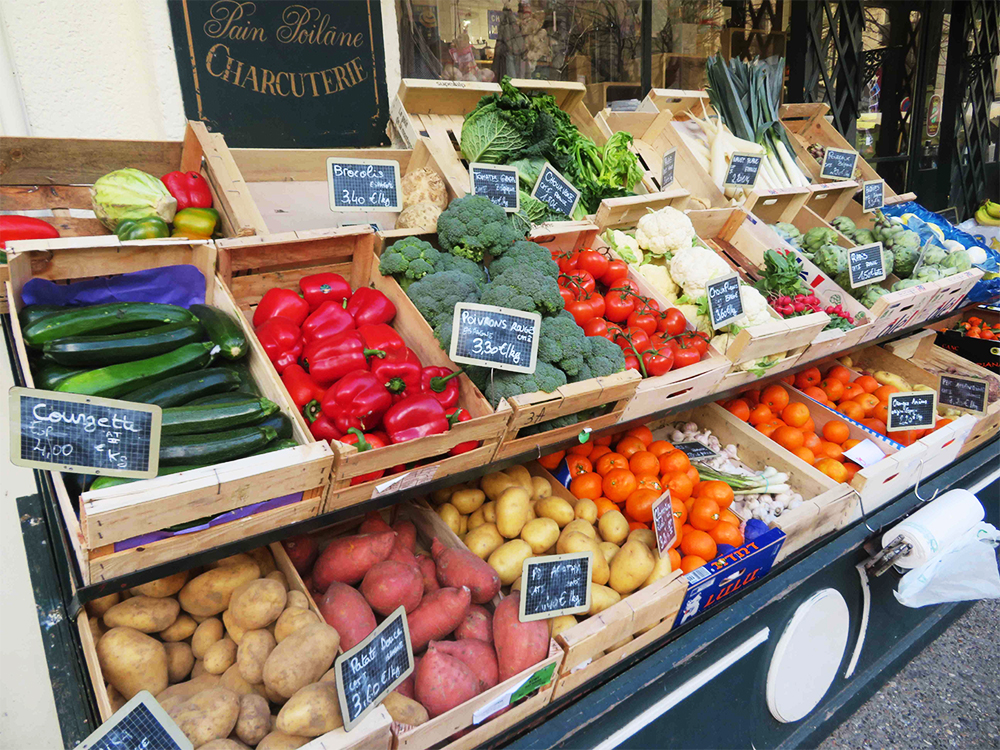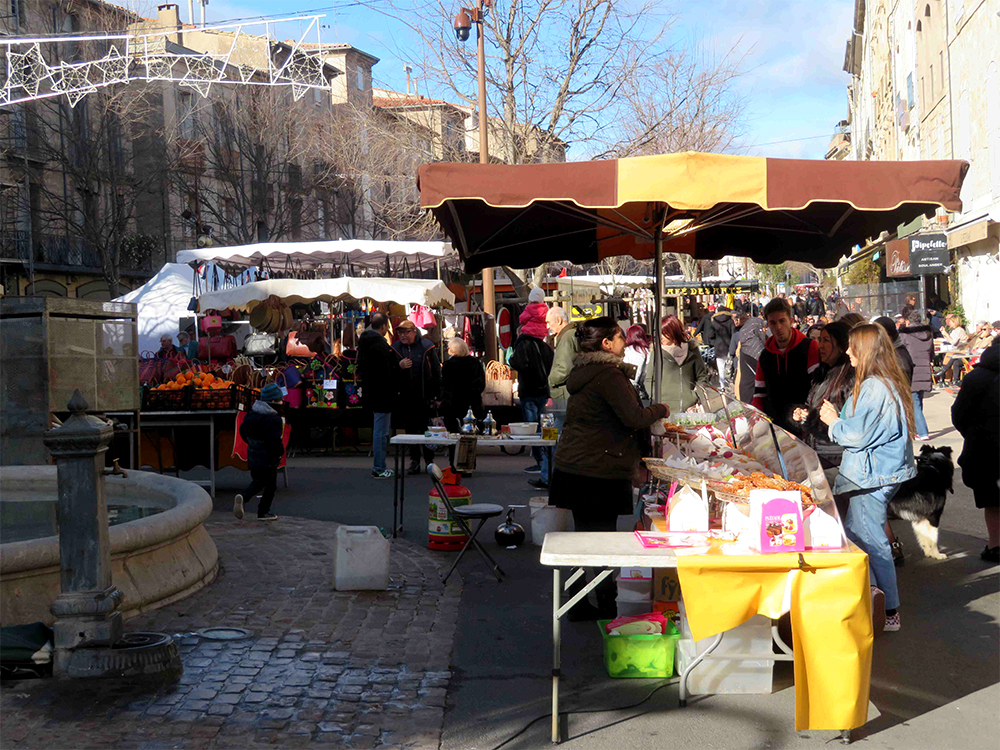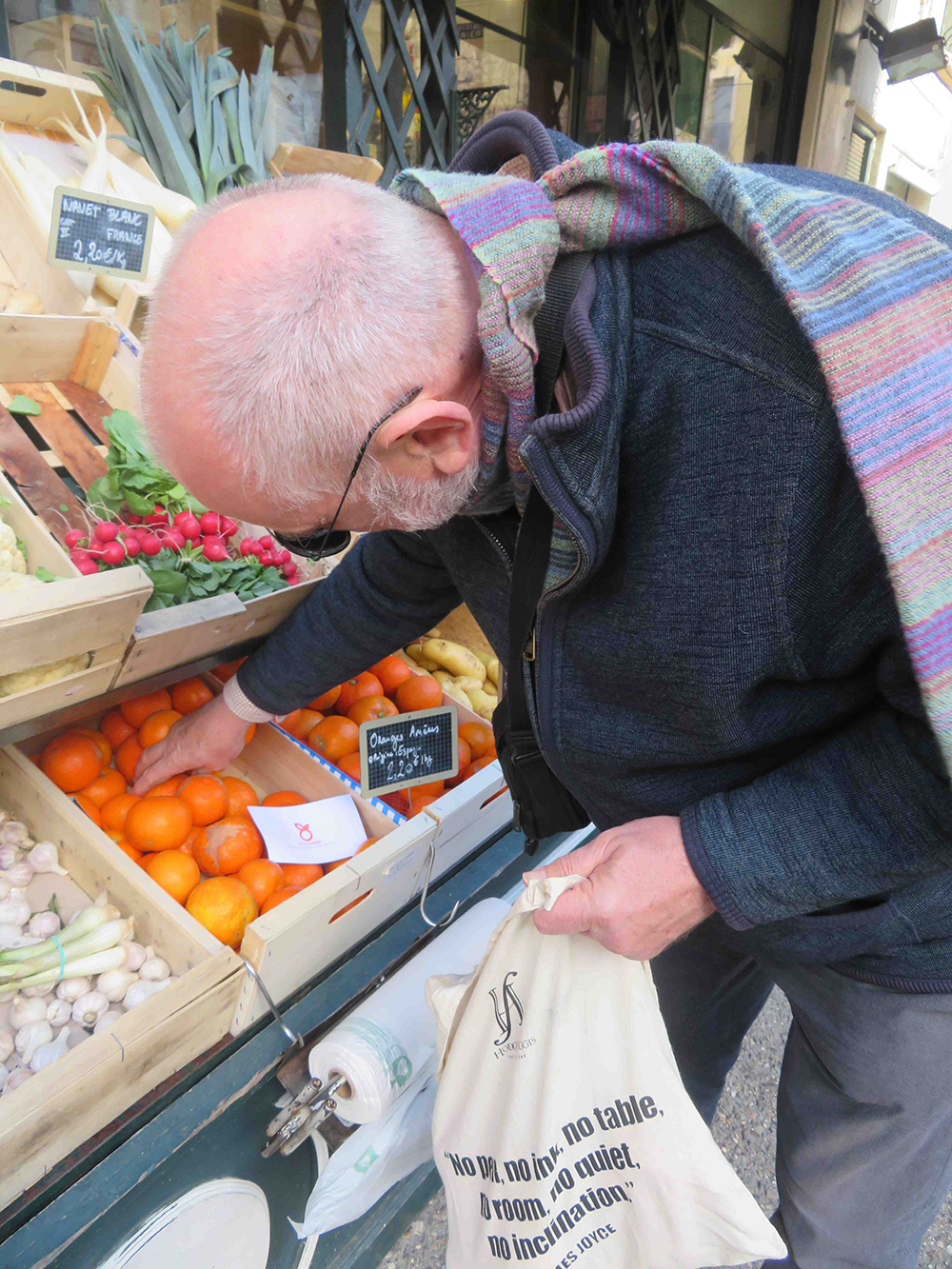An Irish Chef in France
 I have always been enamoured of a good French market. The French really use their markets for buying their groceries and the producer for selling their wares. One of our first family holidays in France was in the Dordogne where there was a superb market in Sarlat on, as I remember, a Saturday.
I have always been enamoured of a good French market. The French really use their markets for buying their groceries and the producer for selling their wares. One of our first family holidays in France was in the Dordogne where there was a superb market in Sarlat on, as I remember, a Saturday.
This was a big one with large fruit and vegetable sellers and also stalls selling meat and fish and what we used to call fancy goods.
My eye was caught by an old lady in black who was carrying a small trestle, a tray and a basket. While I watched her she unfolded her trestle at the church door, laid the tray on top, covered this with a white cloth from her basket and then laid out her wares. Some bouquets garni of herbs, a tray of fresh eggs, a small pyramid of apricots, another of red cherries and a half dozen pots of homemade jam. I roughly calculated her take at about a maximum of €20 in today’s money and wondered how long she would have to stand to earn it. It was consoling to find her gone when I passed the church again about thirty minutes later.
Of course the likely scenario is that she had regular customers who awaited her arrival and scooped up her offerings as soon as she set up her stall.
A lot of the serious buying at a French market is done by ladies of a certain age (my age now) who will be loading their produce into a wheeled basket or one carried more or less willingly by a husband or son.
You watch these ladies carefully; they will only buy the best quality. They will finger the carrots carefully in at least four stalls before they deign to purchase. Sometimes they are willing to offer the stallholder a selection of maybe two potatoes, two carrots and a large onion. The stallholder is perfectly happy to weigh and price these separately, and then neither surprised nor inconvenienced to accept payment by cheque.
These ladies who buy are not happy about this decimalization that has happened to their currency and still in our neck of the woods you will sometimes see the price in Francs in brackets after the price in Euro. Quite frequently the ladies-who-buy will just hand out their purses with a sigh with their purchases and let the seller help themselves.
Mind you the Euro has only been running for seventeen years now so it is understandable how people can be hanging in there thinking in francs. Much less comprehensible was the man in front of me at the poultry van who when asked by the young man what weight of chicken wings he needed replied “une livre” literally a pound. The young stallholder looked back at him in total miscomprehension, so the purchaser amends his request to “cinque cent grams”. Amazing to think that France went metric in their weights in the eighteen fifties but, being a deeply conservative people still haven’t let go of the pound weight quite yet.
 All this brings me around to my morning visit to the market here in Languedoc.
All this brings me around to my morning visit to the market here in Languedoc.
Saturday morning is when Pezenas market is in full flight so we headed off this morning with just a few essential purchases needed.
My number one need was for marmalade oranges, amazingly difficult to source here, and my second essential was for a new pair of braces, as my only pair had given up the ghost this morning as I attempted to fasten them.
 The first thing we needed to do was to get the French current term for both. Braces proved the easier of the two to translate- bretelles was still in current use here but plainly not stocked a lot in Pezenas, in fact it began to be a hopeless quest. Seville Oranges posed another problem. My culinary dictionaries translate this fruit as the Bigarade but asking for this met with many blank stares until I started to ask for Oranges amères - bitter oranges - then at least they did understand, even though they didn’t stock them. They had they assured me, Navel Oranges, Blood Oranges, Satsumas, Tangerines and Clementines but alas no Amères.
The first thing we needed to do was to get the French current term for both. Braces proved the easier of the two to translate- bretelles was still in current use here but plainly not stocked a lot in Pezenas, in fact it began to be a hopeless quest. Seville Oranges posed another problem. My culinary dictionaries translate this fruit as the Bigarade but asking for this met with many blank stares until I started to ask for Oranges amères - bitter oranges - then at least they did understand, even though they didn’t stock them. They had they assured me, Navel Oranges, Blood Oranges, Satsumas, Tangerines and Clementines but alas no Amères.
My last chance was in a little Charcutier-fruitier at the very end of the market. There to my great delight was the elusive Bigarade for an affordable €2.20 the kilo, and then ( because success seems to follow success) in a man’s clothing stall at the very beginning of the market nearest to the car we also found the elusive bretelles, perfect sturdy looking bretelles two and stout enough to maintain the Dwyer dignity. We had also managed to stock up on vegetables (delicious young spinach and young crisp broccoli) and a good free range chicken, and also breakfasted on a creamy coffee in the square and people watched as we chewed our way some pain au raisin from the boulanger next to the café.
All in all an excellent morning’s work.
Martin Dwyer started cooking professionally over 40 years ago in the legendary “Snaffles Restaurant” in Dublin. After a time in a Relais Chateau in Anjou and in “The Wife of Bath” in Kent he opened his own acclaimed restaurant, “Dwyers”, in Waterford in 1989. In 2004 he sold this and moved south to France where he and his wife Síle bought and restored an old presbytery in a village in the Languedoc. They now run Le Presbytère as a French style Chambre d’Hôte. Martin however is far too passionate about food to give up cooking so they now enjoy serving dinner to their customers on the terrace of Le Presbytère on warm summer evenings. Martin runs occasional cookery courses in Le Presbytère and Síle’s brother Colm does week long Nature Strolls discovering the Flora and Fauna of the Languedoc.
Le Presbytère can be seen at: www.lepresbytere.net;
email: martin@lepresbytere.net





There are currently no comments
Leave a comment
Not a member? Register for your free membership now!
Or leave a comment by logging in with: